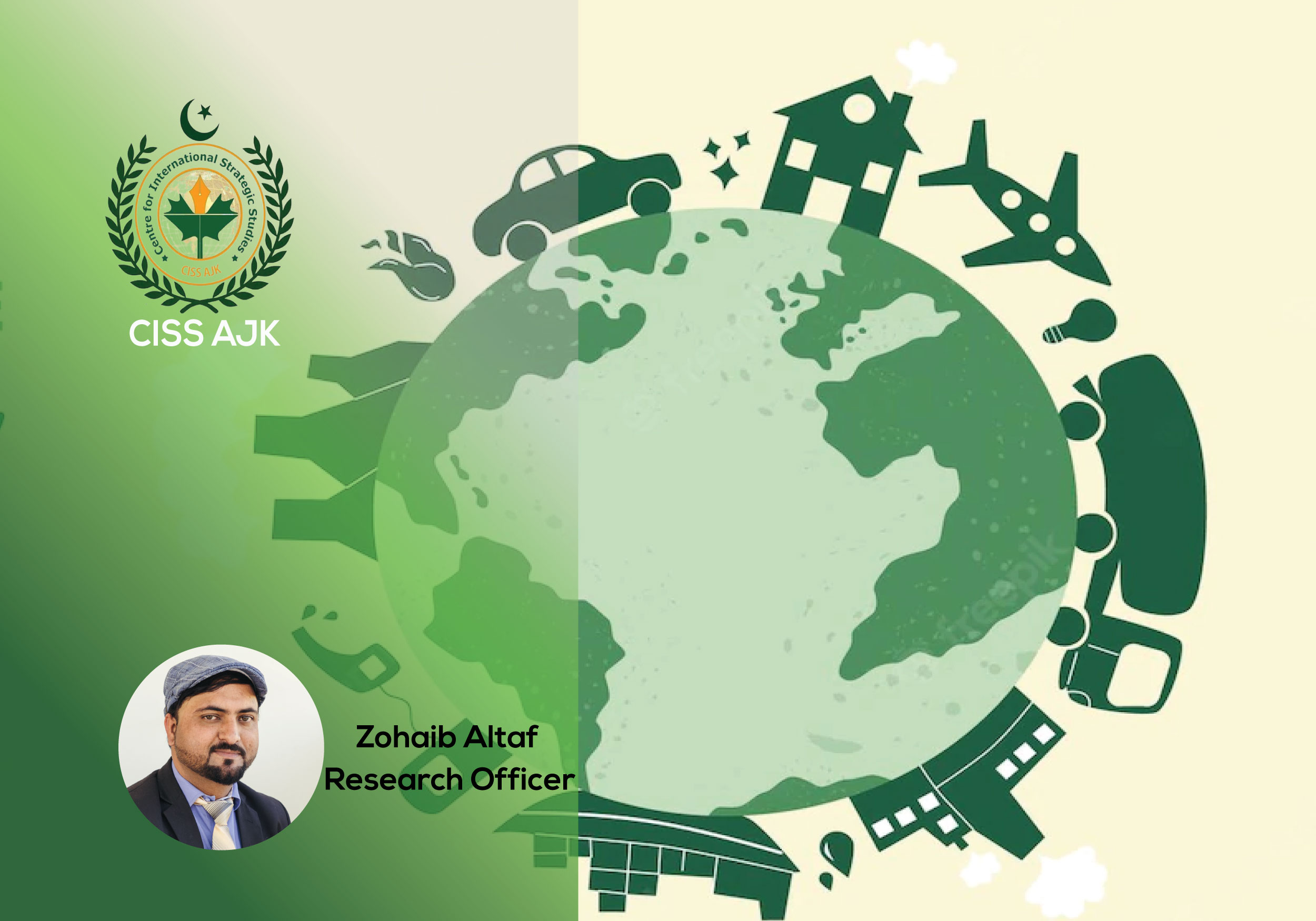Nuclear technology presents a ray of hope
United Nations Climate summits are held annually to concur on the steps the world bellwethers can take to inhibit the ascension in earth’s temperature. The earth’s temperature has risen 1.1°C
and is heading towards 1.5°C. If the temperature rises that much, it will have a colossal impact on every aspect of human life. In 2014, 194 countries signed the Paris Climate Agreement to constrain temperatures under 1.5°C. This year’s COP27 conference in Egypt is consequential in many ways because countries such as Pakistan faced massive climate-induced disasters which have decimated the economy, people, and infrastructure. The world is facing an energy crisis due to the Ukraine crisis. There is no visible way to attain climate goals except nuclear energy because things are getting out of hand, and countries are moving towards failure.
The world will fail to achieve the target of circumscribing temperature increases under 1.5°C, which will have devastating consequences for the developing world. However, adopting nuclear technology still presents countries with hope if significant powers decide to cooperate
In this situation, the goal of keeping the temperature rise to under 1.5°C seems unattainable. Countries that pledged to inhibit their emissions did not do so. The world has already become 1.2°C sultrier than the pre-industrial level. Furthermore, the impact of Greenhouse gases remains for a long time. Consequently, it seems infeasible to procure the goal of constraining the temperature rise to under 1.5°C. This goal of cutting emissions doesn’t seem facile and needs massive investment. According to one estimate, the world will require $1 trillion invested annually to procure the Paris Climate Agreement goal.
To procure the goal of the Paris Climate Agreement, utilizing nuclear power is very eminent. In its reports, the interGovernmental Panel on Climate Change verbalized using proven technology to limit temperature rises to under 1.5°C. Nuclear energy is the only power source that can perpetuate energy without disruption. It is the cleanest proven source of power the world has right now.
The US and France are getting 20 percent and 70 percent of their energy from nuclear power, respectively. Scientists at the Massachusetts Institute of Technology experimented on 1000 scenarios that can be acclimated to provide clean energy to the USA. The purest and most reliable source of potency was nuclear technology. Furthermore, nuclear power plants need less space than wind and solar power plants, and engender energy more efficiently than them. However, nuclear power has so many stigmas affixed to it.
Due to accidents such as Three Mile Island, Chernobyl, and Fukushima, the world bellwethers are reluctant to utilize the full power of nuclear energy. In addition, these accidents can transpire; however, the focus should be on finding the solution to these quandaries, not consummately ignoring its efficacy.
In addition, if we study the deaths caused per unit of electricity, nuclear technology causes 0.007 deaths compared to 24.6 of coal, 18.4 of oil, 4.6 of biomass, and 2.8 of gas. If the world leaders did not adopt the proven nuclear technology out of trepidation, an thu fail to to abbreviate greenhouse gas emissions, more people would die, especially in developing countries.
Research from Climate Impact Lab illustrated that people in low-income countries would become victims of climate change more than those of more affluent countries. According to its recent report, even if countries meet their Pairs Climate Agreement pledges, in the cities like Faisalabad in Pakistan, the yearly all-cause death rate could increase by 67 deaths per 100,000.
Furthermore, the world will always need more electricity in the future because temperatures will increase due to climate change. In this scenario, people will be stuck in a cyclic process in which they will utilize more electricity to keep themselves cool, which will further deteriorate the climate if we do not find a way to provide electricity from excellent nuclear resources. Ergo, world leaders, and companies need to find a solution to the quandaries cognate to nuclear technology.
Companies like Terra power are endeavoring to build Next Generation nuclear reactors. Utilizing the Super Computer simulation, they produced a model of a nuclear reactor that engenders less atomic waste and can additionally work on the waste of other nuclear reactors. Furthermore, they build it underground, which can avert it from attacks, and radioactive material is stored in pins that expand if it overheats, which slow downs nuclear reaction. These innovative solutions are the desideratum of the hour. The Non-Proliferation Treaty also emphasizes using placid nuclear technology; however, this seems arduous in the current multi-spectrum geopolitical environment.
The Russia-Ukraine war will also impact the development of nuclear power reactors. Russia is developing more nuclear reactors worldwide, and China is following it. Due to the current geopolitical competition, the USA would not help Russia and China to build nuclear reactors and develop a cognition of dependency in other countries. Furthermore, significant powers must cooperate for the peaceful spread of atomic energy.
The world will fail to achieve the target of circumscribing temperature increases under 1.5°C, which will have devastating consequences for the developing world. However, adopting nuclear technology still presents countries with hope if significant powers decide to cooperate.
The writer is Research Officer at CISS, AJK. He tweets @zohaib24hdj



